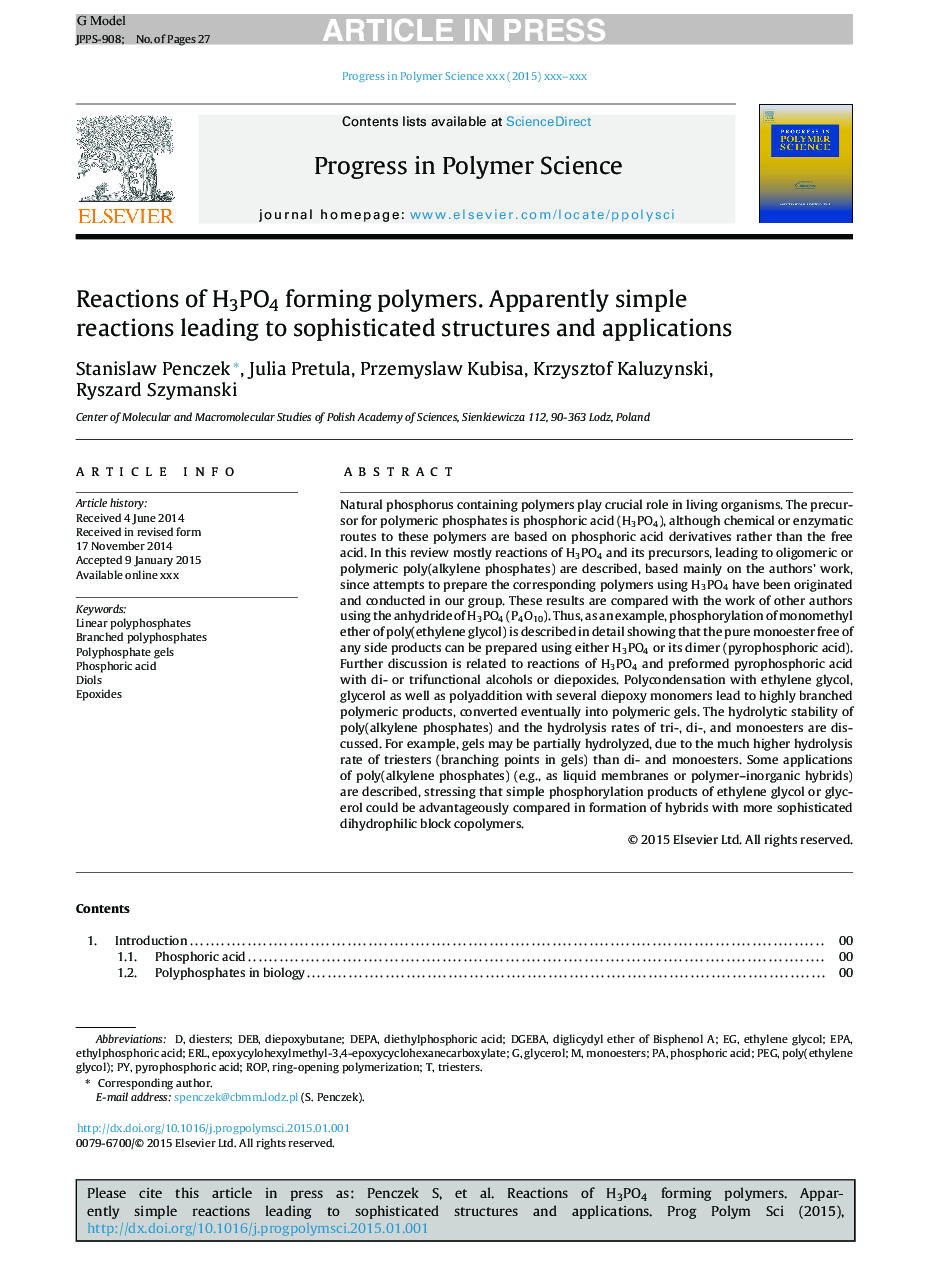| Article ID | Journal | Published Year | Pages | File Type |
|---|---|---|---|---|
| 5208020 | Progress in Polymer Science | 2015 | 27 Pages |
Abstract
Natural phosphorus containing polymers play crucial role in living organisms. The precursor for polymeric phosphates is phosphoric acid (H3PO4), although chemical or enzymatic routes to these polymers are based on phosphoric acid derivatives rather than the free acid. In this review mostly reactions of H3PO4 and its precursors, leading to oligomeric or polymeric poly(alkylene phosphates) are described, based mainly on the authors' work, since attempts to prepare the corresponding polymers using H3PO4 have been originated and conducted in our group. These results are compared with the work of other authors using the anhydride of H3PO4 (P4O10). Thus, as an example, phosphorylation of monomethyl ether of poly(ethylene glycol) is described in detail showing that the pure monoester free of any side products can be prepared using either H3PO4 or its dimer (pyrophosphoric acid). Further discussion is related to reactions of H3PO4 and preformed pyrophosphoric acid with di- or trifunctional alcohols or diepoxides. Polycondensation with ethylene glycol, glycerol as well as polyaddition with several diepoxy monomers lead to highly branched polymeric products, converted eventually into polymeric gels. The hydrolytic stability of poly(alkylene phosphates) and the hydrolysis rates of tri-, di-, and monoesters are discussed. For example, gels may be partially hydrolyzed, due to the much higher hydrolysis rate of triesters (branching points in gels) than di- and monoesters. Some applications of poly(alkylene phosphates) (e.g., as liquid membranes or polymer-inorganic hybrids) are described, stressing that simple phosphorylation products of ethylene glycol or glycerol could be advantageously compared in formation of hybrids with more sophisticated dihydrophilic block copolymers.
Keywords
Related Topics
Physical Sciences and Engineering
Chemistry
Organic Chemistry
Authors
Stanislaw Penczek, Julia Pretula, Przemyslaw Kubisa, Krzysztof Kaluzynski, Ryszard Szymanski,
